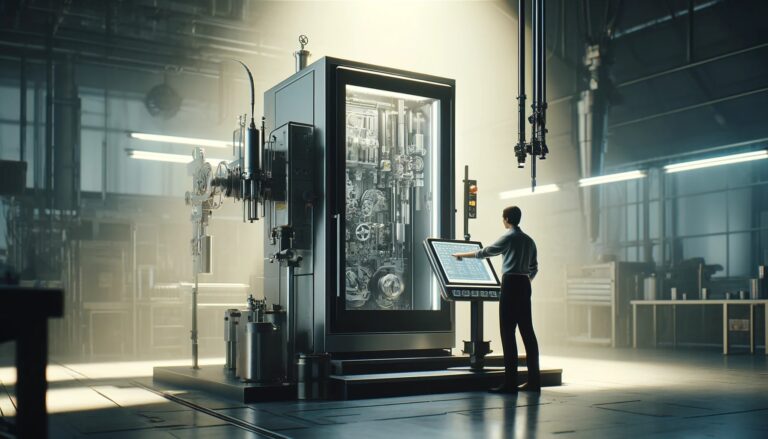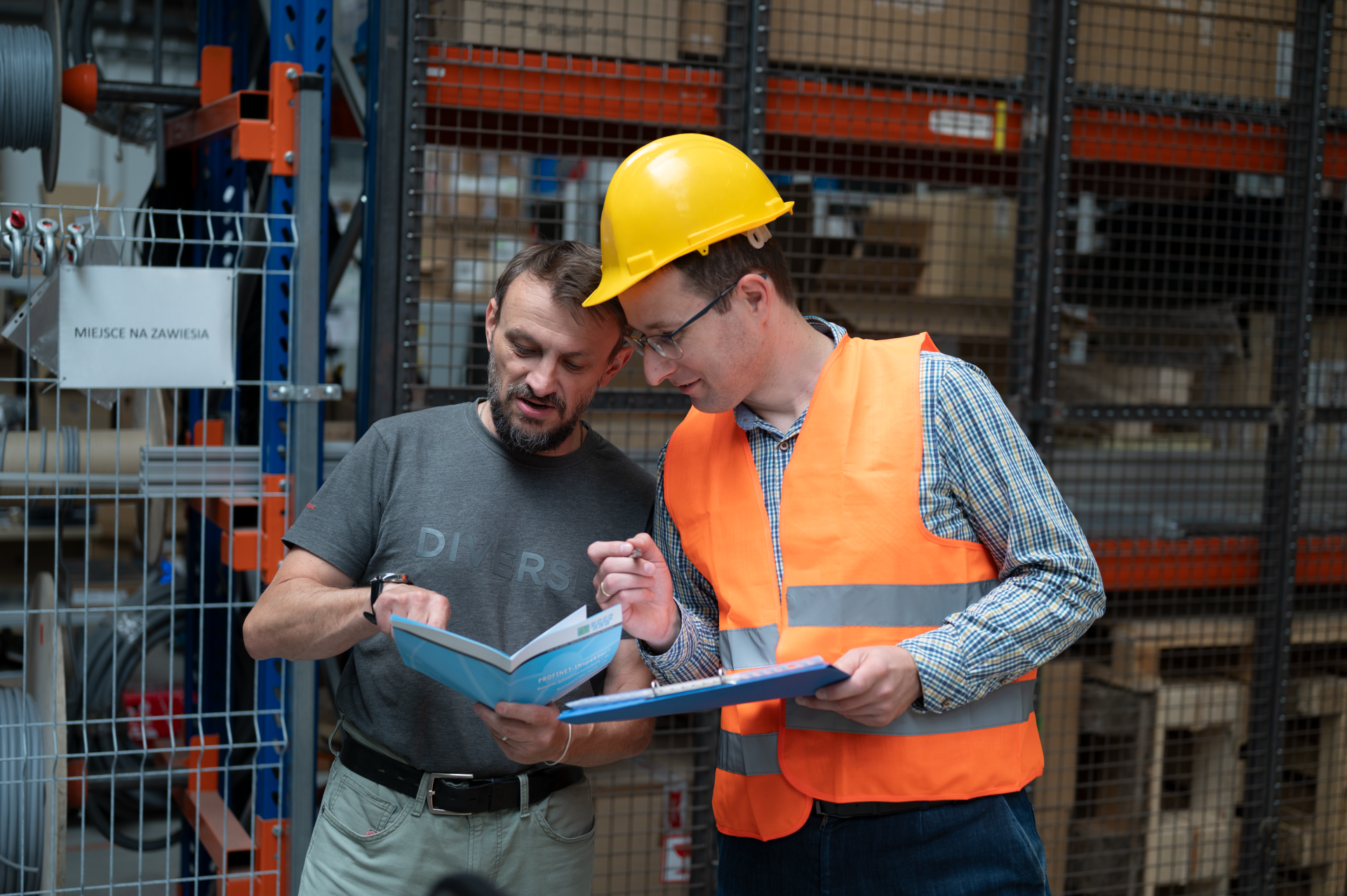Data collection from machines and devices provides access to knowledge that supports efficient and precise management of a manufacturing enterprise. Often, this turns out to be the easiest step. It opens the way for extensive optimizations and improvements in the efficiency of the plant’s operations. Find out what you need to start and reap the benefits of data collection!
Data collection from machines – the entry threshold
Extracting data from machines and equipment is not the most challenging element of the digital transformation of manufacturing companies. The entry process is relatively simple, as it only requires:
- A data source – a sensor that collects desired information, such as pressure measurements or that some products have just come off the production machine.
- A PLC controller or I/O module – an element that will store the data in memory and communicate with the data source and computer.
- A computer/server, which allows running applications that communicate with the above elements.
Having these elements, one can start collecting information from machines. However, raw data will not be very valuable, even in large quantities. It is necessary to translate the acquired information into business value. Therefore, the most crucial step in this process is building a concept, i.e., determining what such actions should provide and what effect we want to achieve through them.
Creating such a plan is also the most complex part, requiring the client’s involvement. However, it is not about having knowledge of the exact parameters one wants to collect, but rather about the purpose of doing so. explitia experts can assist in identifying the required information. This means that a production facility can efficiently start extraction data from machines in a straightforward manner. All complex, more challenging actions and translating the acquired information into business value fall on the side of MES systems or traceability solutions, which you can read about in previous articles.
Data collection solutions are, of course, flexible and allow for their development at later stages. Collecting a specific data X does not mean that it becomes impossible to gather data Y. Integrating systems without interfering with the machine’s sequence can proceed really quickly and smoothly.
Data collection from machines – is It really painless?
The entry threshold for data extraction is indeed appropriately low, but this mainly applies to small, simple solutions and situations where the client is not sure what they realistically need. With more complex systems, specific corporate requirements emerge. For example, these may concern how the infrastructure should look or whether controllers can be in the same network as the system or not. In such cases, the client may need to perform work related to firewalls and network infrastructure.
With larger devices, where the amount of information is vast, it may be necessary to determine priority signals and eliminate those that are collected elsewhere and can be presented more simply.
Example: If we have information about how many units came off the machine in a certain period, it is not necessary to generate additional cycle time signals. These variables can be calculated based on what we are already collecting. The goal is to limit data growth in the database. This way, servers are less burdened.
Soft values – communication
During the integration of large, complicated systems, communication between the client and experts responsible for implementing the new solution is crucial. In the process of connecting systems, many details about how the system should look need to be provided. That’s why it’s valuable to have direct and frequent contact.
Communication between the client and the implementation team is the most important tin the whole process of integration, and establishing assumptions.
Open or Closed System?
An essential element is choosing the technology we want to use for integration. Systems can be divided into:
- Open – leaves space for the client to intervene in the system. It allows for configuring information in the environment and making changes and additions.
- Closed – the client does not have access to the environment, and its operation is entirely managed by the external company that implemented the system. The client only needs to ensure the maintenance of the network connection of the solution to the controller.
Therefore, the choice of technology depends on the client’s preferences and the competencies present in their team. It’s essential to consider and weigh what kind of initiatives are planned for the future. In the case of closed systems, it is necessary to contact the external company for help every time, but at the same time, any problems and failures are the responsibility of the implementers.
Are you at the threshold of your enterprise’s digital transformation? Are you considering implementing an IT system, but unsure how to effectively gather data from machines and devices? Do you have an interest in collecting and visualizing key information to optimize production processes and save costs? Contact us, and we will answer all your questions!
Contact us
Do you want to move your production plant to level 4.0? Are you interested in modern solutions for industry in the field of automation and digitisation? Be sure to let us know!


